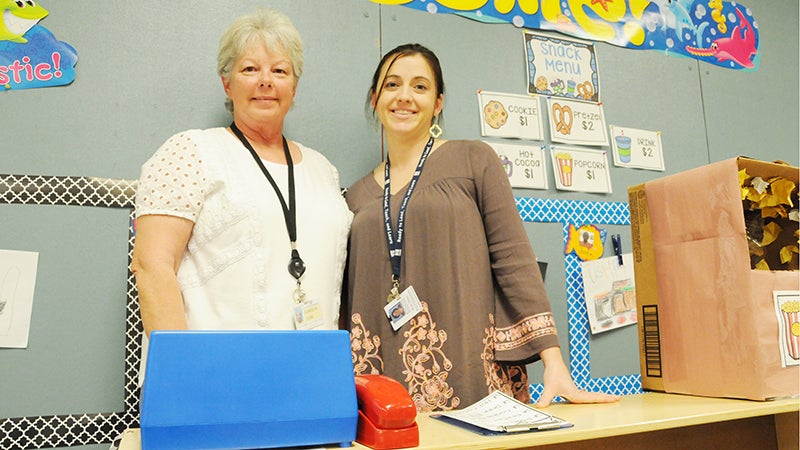Turk, Hadley love roles as Pre-K teachers at Rachel Patterson
Published 12:06 am Wednesday, January 31, 2018

- Rachel Patterson Pre-K Teachers Carolyn Turk and Rachel Hadley. | Andrew Garner/Atmore Advance
Rachel Patterson Elementary Students in Carolyn Turk’s Pre-K class didn’t move while Rep. Bradley Byrne read Dr. Seuss’s “Oh The Places You’ll Go!”
Byrne paid a visit to RPES on Jan. 25 to learn more about the benefits the state’s voluntary First Class Pre-K classrooms have from the Preschool Development Grant.
Turk’s class is one of two at RPES, and the school serves as one of three different Pre-K sites in Escambia County. Three years ago, the first Pre-K class in the county was installed at the now-closed A.C. Moore Elementary School. Each class in the county and state is funded through the development grant.
Turk’s first Pre-K class was the first in the county. The other RPES Pre-K teacher is Rachel Hadley.
“The classrooms that we have are through a grant, and our grant has to be approved and fully funded before we can add a classroom,” RPES Principal John Brantley said. “The first year we applied for a grant, we actually got a classroom. We then knew we had such a need for it that we applied for another grant, which allowed us another classroom.”
Hadley said it takes a special person to teach the class.
“For sure it takes patience, but you’ve also got to have that momma side,” Hadley said. “You’ve got to love babies.”
Turk, a 12-year teacher, said she got into teaching because she knew it’s a profession she always wanted to get in to.
“I got into it late in life, but I was 41-42 when I went back,” she said.
Hadley said she went into teaching because of her brother, who had special needs.
“When I went into Pre-K, they had a program at A.C. Moore, and it seemed like a program where I needed to go,” Hadley said.
Each classroom at RPES and in the county holds 18 students. Across the state, there are 938 alabama First Class Pre-K classrooms.
While visiting RPES, Byrne sat down with school administrators, teachers and state education dignitaries to talk about the program.
Byrne learned that 86 percent of the federal grant funds go to the schools’ Pre-K programs. The other 14 percent goes to salaries and other support.
Alabama’s First Class Pre-K system receives $77.5 million in state appropriations, and for the last three years, state funding for the program has been augmented by $17.5 million per year by the preschool development grant.
“The biggest takeaway from the visit is that the rest of the nation has a lot to learn from Alabama’s successful Pre-K programs,” Byrne said. “I appreciated the opportunity to visit with the students, teachers, administrators and community leaders who help make the program such a success.
“As a member of the House Education and Workforce Committee, I will be sure to take my experiences back to Washington as we work to improve Pre-K programs around the country,” he said.
While at RPES, Byrne visited Hadley and Turk’s classrooms, participating in activities in each.
Turk said she thinks her students felt like it was important.
“They were into it,” she said. “They were not talking. They asked very little questions. It was unreal.”
In Hadley’s class, Byrne got the opportunity to play with students during their activity time.
“I think in my room they were excited to have an adult to play with,” Hadley said.
Some of the things Hadley and Turk teach in their classrooms include emotions, how to say please and thank you, being considerate, the importance of paying attention and academics.
“They are excellent with those kids,” Brantley said.
In 2012, the Alabama School Readiness Alliance, which hosted Byrne’s tour, launched a 10-year campaign to advocate for incremental state funding increases in First Class Pre-K until the program is fully funded. The ASRA estimated that the state would need to appropriate funding of $144 million to give every Alabama family the opportunity to voluntarily enroll their 4 year old in the First Class Pre-K program.



